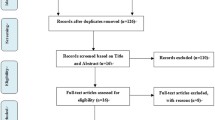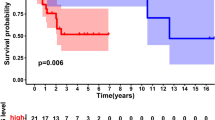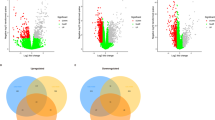Abstract
Osteosarcoma (OS) is an aggressive malignant tumor of the bones. Our study intended to identify and analyze potential pathogenic genes and upstream regulators for OS. We performed an integrated analysis to identify candidate pathogenic genes of OS by using three Gene Expression Omnibus (GEO) databases (GSE66673, GSE49003 and GSE37552). GO and KEGG enrichment analysis were utilized to predict the functional annotation and potential pathways of differentially expressed genes (DEGs). The OS-specific transcriptional regulatory network was established to study the crucial transcriptional factors (TFs) which target the DEGs in OS. From the three GEO datasets, we identified 759 DEGs between metastasis OS samples and non-metastasis OS samples. After GO and KEGG analysis, ‘cell adhesion’ (FDR = 1.27E-08), ‘protein binding’ (FDR = 1.13E-22), ‘cytoplasm’ (FDR = 5.63E-32) and ‘osteoclast differentiation’ (FDR = 0.000992221) were significantly enriched pathways for DEGs. HSP90AA1 exhibited a highest degree (degree = 32) and was enriched in ‘pathways in cancer’ and ‘signal transduction’. BMP6, regulated by Pax-6, was enriched in the ‘TGF-beta signaling pathway’. We indicated that BMP6 may be downregulated by Pax-6 in the non-metastasis OS samples. The up-regulated HSP90AA1 and down-regulated BMP6 and ‘pathways in cancer’ and ‘signal transduction’ were deduced to be involved in the pathogenesis of OS. The identified biomarkers and biological process in OS may provide foundation for further study.






Similar content being viewed by others
References
Zhou W, Hao M, Du X, Chen K, Wang G, Yang J (2014) Advances in targeted therapy for osteosarcoma. Discov Med 17(96):301–307
Bernardini, G., Geminiani, M., Gambassi, S., Orlandini, M., Petricci, E., & Marzocchi, B., et al. (2017). Novel smoothened antagonists as anti-neoplastic agents for the treatment of osteosarcoma. J Cell Physiol
Yan H, Zhang B, Fang C, Chen L (2018) Mir-340 alleviates chemoresistance of osteosarcoma cells by targeting zeb1. Anti-Cancer Drugs:1
Pang Y, Zhao J, Fowdur M, Liu Y, Wu H, He M (2018) To explore the mechanism of the grm4 gene in osteosarcoma by rna sequencing and bioinformatics approach. Med Sci Monit Basic Res 24:16–25
Mitchell PJ, Tjian R (1989) Transcriptional regulation in mammalian cells by sequence-specific dna binding proteins. Science 245(4916):371–378
Zhu M, Liu CC, Cheng C (2013) Reactin: regulatory activity inference of transcription factors underlying human diseases with application to breast cancer. BMC Genomics 14(1):504
Yang L, Feng S, Yang Y (2016) Identification of transcription factors (tfs) and targets involved in the cholangiocarcinoma (cca) by integrated analysis. Cancer Gene Ther 23(12):439–445
Diao C, Xi Y, Xiao T (2018) Identification and analysis of key genes in osteosarcoma using bioinformatics. Oncol Lett 15(3):2789–2794
Liu HY, Zhang CJ (2017) Identification of differentially expressed genes and their upstream regulators in colorectal cancer. Cancer Gene Ther 24:244–250
Benjamini Y, Hochberg Y (1995) Controlling the false discovery rate-a practical and powerful approach to multiple testing. J R Stat Soc 57(1):289–300
Li JJ, Wang BQ, Fei Q, Yang Y, Li D (2016) Identification of candidate genes in osteoporosis by integrated microarray analysis. Bone Joint Res 5(12):594–601
Wang F, Wang R, Li Q, Qu X, Hao Y, Yang J, Zhao H, Wang Q, Li G, Zhang F, Zhang H, Zhou X, Peng X, Bian Y, Xiao W (2017) A transcriptome profile in hepatocellular carcinomas based on integrated analysis of microarray studies. Diagn Pathol 12(1):4
Lee YS, Kim JK, Ryu SW, Bae SJ, Kwon K, Noh YH, Kim SY (2015) Integrative meta-analysis of multiple gene expression profiles in acquired gemcitabine-resistant cancer cell lines to identify novel therapeutic biomarkers. Asian Pac J Cancer Prev 16(7):2793–2800
Luetke A, Meyers PA, Lewis I, Juergens H (2014) Osteosarcoma treatment - where do we stand? A state of the art review. Cancer Treat Rev 40(4):523–532
Guan D, Tian H (2017) Integrated network analysis to explore the key genes regulated by parathyroid hormone receptor 1 in osteosarcoma. World J Sugr Oncol 15(1):177
Taipale M, Jarosz DF, Lindquist S (2010) Hsp90 at the hub of protein homeostasis: emerging mechanistic insights. Nat Rev Mol Cell Biol 11(7):515–528
Coskunpinar E, Akkaya N, Yildiz P, Oltulu YM, Aynaci E, Isbir T, Yaylim I (2014) The significance of hsp90aa1, hsp90ab1 and hsp90b1 gene polymorphisms in a turkish population with non-small cell lung cancer. Anticancer Res 34(2):753–757
Chu SH, Liu YW, Zhang L, Liu B, Li L, Shi JZ, Li L (2013) Regulation of survival and chemoresistance by hsp90aa1 in ovarian cancer skov3 cells. Mol Biol Rep 40(1):1–6
Mckay, W., Boden, S., & Yoon, S. (2006). METHODS OF INDUCING THE EXPRESSION OF BONE MORPHOGENETIC PROTEINS (BMPs) AND TRANSFORMING GROWTH FACTOR-beta-PROTEINS (TGF-betas) IN CELLS. CA, EP1629106
Honda Y, Knutsen R, Strong DD, Sampath TK, Baylink DJ, Mohan S (1997) Osteogenic protein-1 stimulates mrna levels of bmp-6 and decreases mrna levels of bmp-2 and -4 in human osteosarcoma cells. Calcif Tissue Int 60(3):297–301
Shi, Y. J., & Pan, X. T. (2016). Bmp6 and bmp4 expression in patients with cancer-related anemia and its relationship with hepcidin and s-hjv. Genet Mol Res Gmr, 15(1)
Hu F, Zhang Y, Li M, Zhao L, Chen J, Yang S et al (2015) Bmp-6 inhibits the metastasis of mda-mb-231 breast cancer cells by regulating mmp-1 expression. Oncol Rep 35(3)
Liu G, Liu YJ, Lian WJ, Zhao ZW, Yi T, Zhou HY (2014) Reduced bmp6 expression by dna methylation contributes to emt and drug resistance in breast cancer cells. Oncol Rep 32(2):581–588
Zong X, Yang H, Yu Y, Zou D, Ling Z, He X, Meng X (2011) Possible role of pax-6 in promoting breast cancer cell proliferation and tumorigenesis. BMB Rep 44(9):595–600
Shyr CR, Tsai MY, Yeh S, Kang HY, Chang YC, Wong PL et al (2010) Tumor suppressor pax6 functions as androgen receptor co-repressor to inhibit prostate cancer growth. Prostate 70(2):190–199
Author information
Authors and Affiliations
Contributions
CY and XS designed and performed the train of thought, DH and CM analyzed the resulting data, JR, LF, CC and BL contributed the analysis tools. All authors read and approved the final manuscript.
Corresponding author
Ethics declarations
Ethics Approval and Consent to Participate
Not applicable.
Consent to Publication
All authors consented to publication.
Competing Interests
All authors declare that they have no conflicts of interest.
Additional information
Publisher’s Note
Springer Nature remains neutral with regard to jurisdictional claims in published maps and institutional affiliations.
Rights and permissions
About this article
Cite this article
Yang, C., Huang, D., Ma, C. et al. Identification of Pathogenic Genes and Transcription Factors in Osteosarcoma. Pathol. Oncol. Res. 26, 1041–1048 (2020). https://doi.org/10.1007/s12253-019-00645-w
Received:
Accepted:
Published:
Issue Date:
DOI: https://doi.org/10.1007/s12253-019-00645-w




